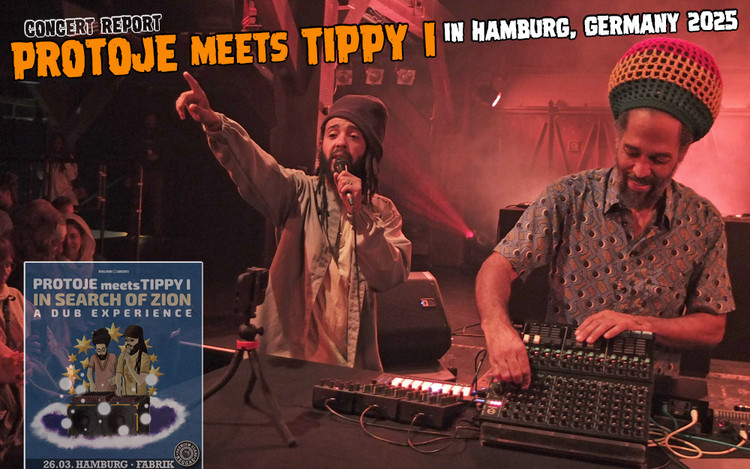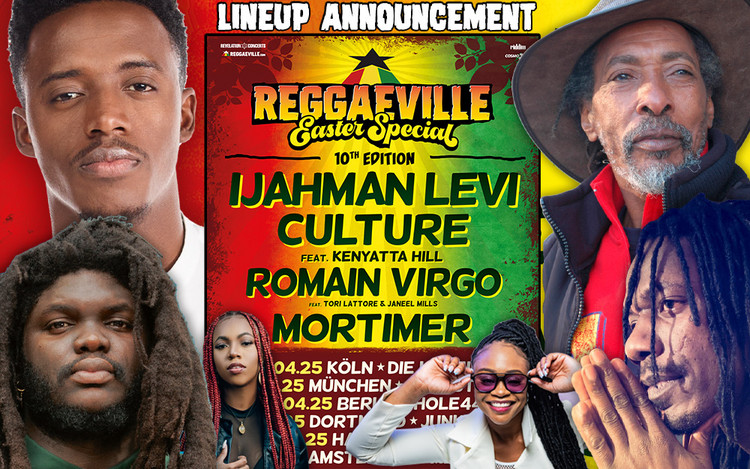Munchy in Ethiopia - Call the hippo and tell it to show up (Travel Blog #4)
11/28/2015 by Munchy

Munchy in Ethiopia 2015 - Travel Blog Day 4
CLICK HERE TO VIEW THE PHOTO-BLOG!
With my fifth day in the capital the adaption phase is over – whether I like it or not. I have a flight booked to Bahir Dar, about 350 miles North West of Addis Ababa, and neither Valentin nor Kamila will accompany me. Munch on her own! But I am excited. I have learned my little phrases in Amharic like Hello, How are you, Thanks and can order all my favorite drinks: buna – coffee, chai – tea, ambo – sparkling water. So ready, me ready!
One hour is the flight time and I am glued to the window. The landscape is breathtaking: hills, valleys, highlands and plateaus, green, yellow, and red fields form a natural mosaic! After one hour with my mouth wide open and my camera always at hand our little bombardier jet lands in Bahir Dar. The procedure upon arrival is quite informal. I take my backpack of a baggage cart in self-service and show my passport to a guy who approaches me casually before I exit the airport. It's a sunny day, the sky as blue as can be, perfect weather to come to Bahir Dar! The city's name is Amharic for “sea shore”. It is one of Ethiopia's leading tourist destinations right by Lake Tana, the country's largest lake. A huge smile is on my face as we drive down the main road bordered by palm trees. This is the first time I feel like I am really on a holiday trip! Also because I have a hilarious tour guide by my side. He brings me to my hotel and already has suggestions for my next day. “You should do a boat ride and see our churches on and around the lake! I can arrange it. And I can't promise it, because I don't have their phone number to tell them, but maybe you will also see the hippos.” I agree. I do want to go on a boat ride, his package seems perfect for me, but one thing though... “Find out the number please. Call the hippo. I really want to see it!”
After a well-relaxed night in my bed covered with rose petals (yes, also towel swans and all of that!) a tuk tuk brings me to the harbor, where the boat is already waiting.  Our random tourist group is an interesting combination: several Ethiopians, most of them from Addis on a weekend trip, Belgian Wouter, Carsten from Germany, a Tanzanian, a guy from New Zealand, a family from Tunisia working in Addis, and a guy who has it all: originally from Ethiopia, spent years in Sudan, now living in Frankfurt and speaking probably all languages spoken on board, and maybe even more. Together we embark on the calm lake heading North-East to the outlet of the Blue Nile. Ethiopia's biggest lake (and by big I mean that it would take you a day to go from South to North with a fast boat) is the source of the river. Here, where the lake discharges into the Blue Nile is also where we're supposed to find the hippos. But apparently they didn't answer the phone and don't show up today. At least we get to see another tourist attraction: the papyrus boats that glide silently but speedy above the glistening surface of the brown water. But of course, what Lake Tana is most famous for is (guess what?!) its churches and monasteries. First up is Debra Maryam on a small island. The men take the tour and explore it, while the females, which is simply the Tunisian lady and me, save the money of the entrance fee to spend it on more profane things. Along the way from the pier to the monastery stalls and more stalls offer bracelets, baskets, scarves, and a variety of Ethiopian crosses. We enjoy the colors and fabrics before we wander off-track into bright brushwood where mangoes, guava, banana, and of course papyrus grow.
Our random tourist group is an interesting combination: several Ethiopians, most of them from Addis on a weekend trip, Belgian Wouter, Carsten from Germany, a Tanzanian, a guy from New Zealand, a family from Tunisia working in Addis, and a guy who has it all: originally from Ethiopia, spent years in Sudan, now living in Frankfurt and speaking probably all languages spoken on board, and maybe even more. Together we embark on the calm lake heading North-East to the outlet of the Blue Nile. Ethiopia's biggest lake (and by big I mean that it would take you a day to go from South to North with a fast boat) is the source of the river. Here, where the lake discharges into the Blue Nile is also where we're supposed to find the hippos. But apparently they didn't answer the phone and don't show up today. At least we get to see another tourist attraction: the papyrus boats that glide silently but speedy above the glistening surface of the brown water. But of course, what Lake Tana is most famous for is (guess what?!) its churches and monasteries. First up is Debra Maryam on a small island. The men take the tour and explore it, while the females, which is simply the Tunisian lady and me, save the money of the entrance fee to spend it on more profane things. Along the way from the pier to the monastery stalls and more stalls offer bracelets, baskets, scarves, and a variety of Ethiopian crosses. We enjoy the colors and fabrics before we wander off-track into bright brushwood where mangoes, guava, banana, and of course papyrus grow.
From the Eastern side of the lake our boat heads further to Zege peninsula on the opposite side, where two more monasteries are being explored by those who are interested. I am not one of them, I admit. I have done my homework, have read my travel guide, and I am on a budget. Every church has its own admission fee, and I want to save my money for the most interesting one, Ura Kidane Mehret. But we are about to head home now. Hold that thought, people! It's only mid-day! What about this what Wikipedia considers “the most attractive church in the Lake Tana region”? Our captain, who is in charge and only speaks Amharic, seems not very amused about my idea. It's a half an hour walk to reach there, someone translates to us. Ok, but, so?!? If this wasn't an interesting trip as far as nature, history, and religion is concerned, now this whole story gets even more fascinating socially. We are literally all in one boat and there goes now the diversion. The kids are said to be tired, the nerds (including, of course, us two Germans and Wouter from Belgium) have read their books and would really wish the complete tour worth their money (the fact that we just discovered earlier, that everyone of us paid different fees for the tour, doesn't help here neither), some are ambivalent or just don't care, and the Tanzanian guy reveals, that he has a flight to catch in the evening. No doubt, we have to reach back in time for him to go to the airport, but there would still be time for a quick monastery visit. Should we vote? The discussion is already heated and in full effect. I am said to be insisting. “I am not insisting” I insist. Wouldn't make a difference anyway, as the captain in charge would not understand even if I was. “She has a book” I overhear the Tanzanian whisper in a tone, as if I was some cruel witch trying to mislead the group in a trap. “Our books say the walk is only 20 minutes.” Carsten and Wouter add trying to calm down the others. I will not repeat that I am not insisting. I give up. My Amharic vocabulary doesn't include “I have no problem if we go home”. So I relax and leave our fate in the hands of the captain. He is in control anyway – and decides in favor of the tourist nerds. “40 minutes” he mumbles as the boat lands. Clearly he would have been happy to go home, but could also not ignore the importance of Ura Kidhane Mehret. 40 minutes? No problem for the European crew! When the book says 20 minutes, we will make it in less than 15 and so we run. We have a point to prove, that it's not that far and that this stop is not a big deal. Again, so we run. Uphill in the humid mid-day heat, through the jungle towards the monastery – and reach exactly 9 minutes later (yes, I have called us nerds before, but precision and ambition is nothing to be ashamed of, is it ;)).
The church is extraordinarily beautiful and so worth the argument and the sweat. The classic Ethiopian Orthodox circular church dates back from the 16th century. Inside the wooden walls is the maqdes or sanctuary, the Holy of Holies, where the Tabot, a replica of the Ark of the Covenant rests. Only the priests are allowed to access it. Its walls are entirely and elaborately painted with scenarios from the Bible and the history of the Ethiopian Orthodox Church.  The depictions are in bright colors and amazingly detailed. Wouter, Carsten, and I can't help the astonishment as we circle the place. Much to my surprise a big part of our travel party appears minutes later, also those who didn't show much interest earlier. And they are just as excited as we are. One even thanks me, that I insisted on coming (again, I did not insist, but I am glad, you're happy now). We explore the murals, the architecture and the ceremonial drums that are mandatory for the church service. An attached museum hosts religious books from the 9th century, richly embroidered robes, and crowns of former Emperors.
The depictions are in bright colors and amazingly detailed. Wouter, Carsten, and I can't help the astonishment as we circle the place. Much to my surprise a big part of our travel party appears minutes later, also those who didn't show much interest earlier. And they are just as excited as we are. One even thanks me, that I insisted on coming (again, I did not insist, but I am glad, you're happy now). We explore the murals, the architecture and the ceremonial drums that are mandatory for the church service. An attached museum hosts religious books from the 9th century, richly embroidered robes, and crowns of former Emperors.
Pleased and happy the group is now finally ready to head back to Bahir Dar – a little later than 40 minutes though, because the Tanzanian was so fascinated by Ura Kidhane Mehret that he ran late, despite his flight schedule ahead.
Back in the city Carsten, Wouter, and I are not quite ready yet to just go home. It's Saturday on which the markets attract even more people from the surroundings than usual, and obviously even some tourists. So we jump right into the diversity of what Bahir Dar's vendors have to offer. After the first section that bursts with fabrics, clothes and scarves, we move on to kitchen utensils, buckets, and metal tools adjoining the food section. Fresh fruits, lush ripe vegetables form piles and pyramids next to corn, sugar cane, and teff, the Ethiopian native grain that is lately considered the new superfood. Coffee has its on section just like spices and honey. In the recycling areal men are busy manufacturing slippers from old tyre right on the spot. You can bring your clothes to be ironed with archaic cole irons or have dresses sewn. It's a busy world. Hundreds of people buzz around like bees in the narrow lanes that connect the different parts of the market. We are pumped with impressions, we admit eventually. It's time to gain some rest, because tomorrow we have the next adventure awaiting us already.
CLICK HERE TO VIEW THE PHOTO-BLOG!









